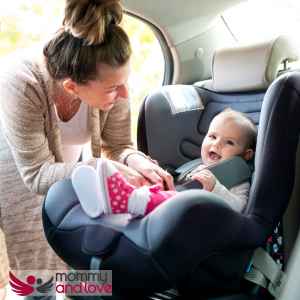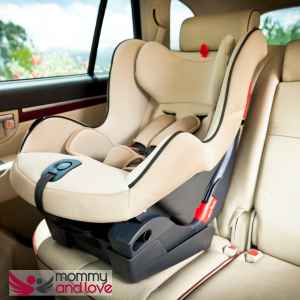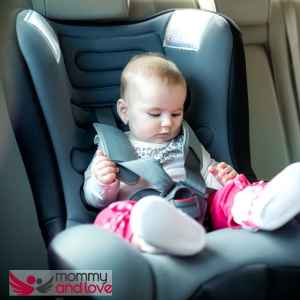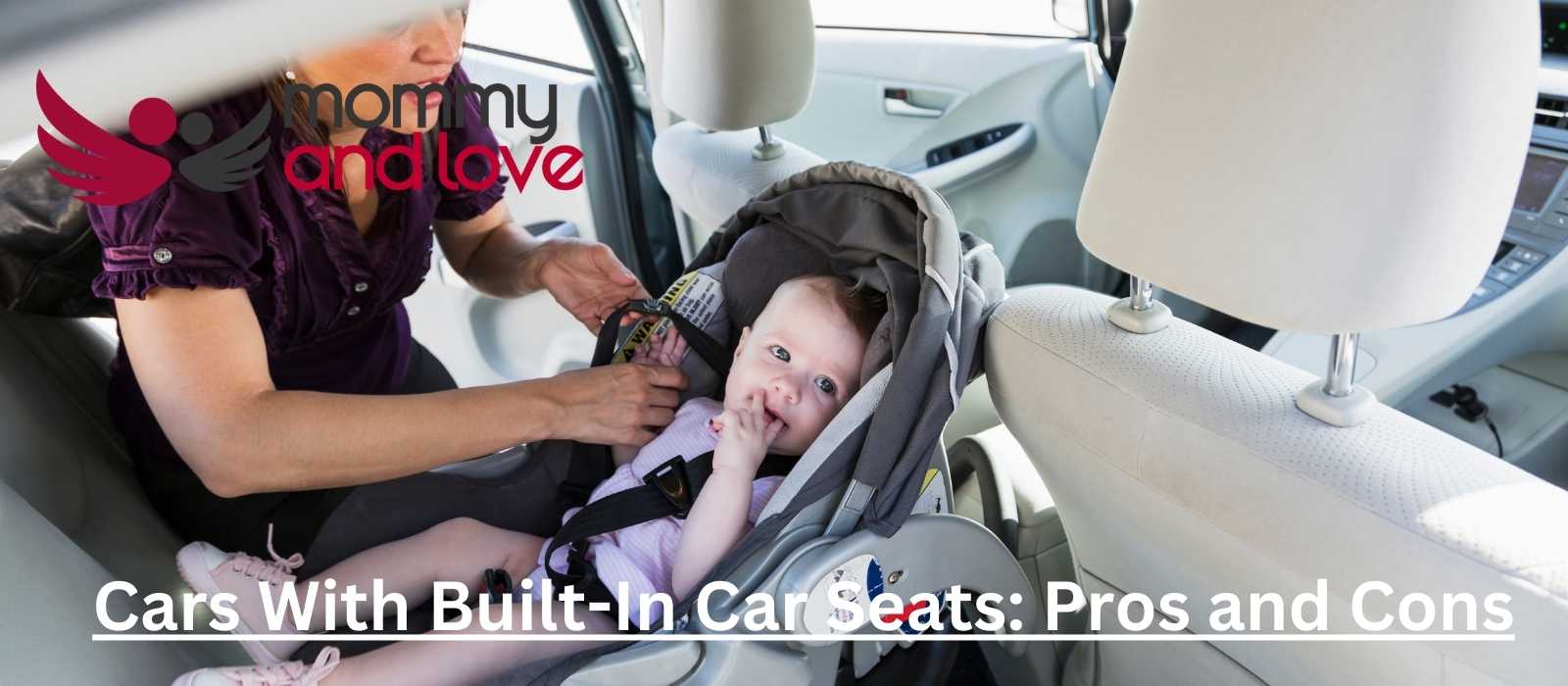As a parent, going out of the house is one of the most challenging things in the world. If it’s not the ‘bursting-at-the-seams’ diaper bag, it’s a whole host of toys and games to keep them entertained. But one of the most important things you’ll need to take is your child’s car seat.
If you have your own car, you’ll usually leave child seats inside. But when it comes to jumping into someone else’s vehicle, you have the ordeal of having to remove the entire seat from one car to another. Not only is this stressful but there may be times when the new vehicle doesn’t have the correct latch systems sliding doors or seat belts.
But some car manufacturers have come up with a solution to this problem in the form of integrated car seats. This further safety technology isn’t something that all cars benefit from at the moment but it’s certainly something I hope will become more common.
But before you run off to chop all wheel drive out in your car and buy a brand-spanking new vehicle complete with built-in booster seats, let’s take a few moments to consider the pros and cons.
- Built-in car seats are child seats that are built directly into the car, rather than being removable.
- Most built-in car seats are actually built-in booster seats, which are suitable for children between certain weight limits.
- The main benefit of built-in booster seats is that they save money on having to buy removable booster seats and save time and hassle when getting ready to go out.
- However, the drawbacks include the cost of having to buy a new vehicle with built-in seats, limited options for where the child can sit, and concerns about child safety in the event of an accident.
In this article, we will cover:
- What a built-in car seat is.
- Which cars feature built-in booster seats.
- The difference between built-in car sears and built-in booster seats.
- The pros and cons of having integrated booster seats in vehicles.
What Is An Integrated Car Seat?

Quite simply, an integrated car seat is a child seat that is built directly into the car as opposed to the removable child seats that a lot of parents use.
While this might seem like a relatively new innovation, the first built-in car seats were actually invented back in the 90s. It was car manufacturers Dodge and Volvo that first introduced the idea, with a front seat platform onto which a rear-facing seat could be placed.
What Cars Come With Integrated Car Seats?

The term integrated car seat is actually a little misleading. You see, most of these front center seat designs are actually built-in booster seats rather than the infant seats that parents of babies and very young children are using.
As such, we can conclude that there aren’t any cars that come with a fully integrated car seat.
That said, some Volvo cars feature a front seat platform that is designed to hold car seats in a rear-facing position. This is ideal for young babies whose parents can put convertible car seat and then sit in the back seat and be face to face with their child.
These seats are unfortunately still in the initial design phases and while the intention is to include them in the Volvo XC90 Excellence, we aren’t sure when this might actually come to fruition.
It will be something of a road safety lifesaver, or at least a back saver, since the platform is designed to rotate, making removing and installing the child seat much less tricky.
Are There Cars With Integrated Booster Seats?
When we talk about any kind of integrated car seat, what we are actually referring to is an integrated booster seat. These two rear seats are what you may find in a variety of models from both Dodge and Volvo.
If you’re looking for a new car with built-in booster seats, then we’d urge you to check out the following models.
- Dodge Journey – some models of the Dodge Journey come with two built-in booster seats designed for children between 48lbs and 89lbs. These are placed in the two outer positions of the second-row seats
- Volvo XC60 – For children between 33lbs and 80lbs, this vehicle features two booster seats on the outer side of the back row.
- Volvo V60 – the 2018 model of this car features dual integrated booster seats on either side of the back seats that are suitable for kids weighing between 33lbs and 80lbs.
- Volvo XC70 – On the second row, there are two built-in booster seats designed for children between 33lbs and 80lbs. This is one of the best cars with built-in car seats since they can be moved into two positions.
- Volvo XC90 – this car benefits from a single built-in booster seat located in the middle of the back row. This one suits children between 33lbs and 80lbs.
- Volvo XC90 Cross Country – Similar to the XC90, the Cross Country’s booster seats are suitable for children weighing between 33lbs and 80lbs. However, with this model, you get two seats on either side of the back row.
What Is The Benefit Of A Built-In Car Seat?

The most obvious benefit of an integrated booster seat is that it saves you money on having to fork out for a removable booster seat. What’s more, if you have more than one child, there are cars with single, third row, or dual integrated booster seats so you’ll save even more.
Yes, you have to purchase the car but with this level of versatility, it’s a worthwhile investment.
Also, consider the time you’ll save when getting ready to go out. No longer will you have to worry about hauling heavy car seats out of the house because they’ll already be in the car. Being fitted, they’re also super secure and potentially safer. If you’ve ever tried getting a removable booster seat to fit properly in one vehicle, you’ll understand that not all seats are designed to fit safely in all vehicles.
A lot of parents swear by integrated booster seats as they’re often a lot more challenging for the child to escape from. That’s not to say it isn’t impossible but your little escape artist will have much more difficulty getting out of middle integrated booster seat when they’re not supposed to.
What Are the Drawbacks Of Built-In Car Seats?

There are a lot of advantages to the integrated child seat but as with anything, there are things that might not quite be up to scratch. Many parents complain about the cost of having to invest in a new vehicle just for the sake of a built-in integrated child seat too. Is it worth it? That really depends on how much use you’ll get out of it and what other family-friendly features the car has.
It’s also a good idea to keep in mind that you’re much more limited on where your child can sit. Smaller children would usually ride in the back of their parents’ vehicles but depending on the child’s height, some state laws may permit them to ride up front with a suitable booster or seat belt. However, this isn’t possible when the seat belt is fixed into position.
For parents whose children are often with other family members, you don’t have the option of simply handing over a car seat. Instead, those family members will either have to buy a seat cushion their own or borrow your car, which leaves you without any transport.
Furthermore, there is some safety concern over the child safety of these seats in the event of an accident. Should the worst happen, emergency responders would often remove booster cushion from the car seat with the child still in it to prevent moving their spine or neck. This cannot be done with built-in booster seats. While that doesn’t necessarily mean they are unsafe, it could be risky if there was an accident.
Final Thoughts
Having built-in rear seats for your child sounds amazing and there are a lot of plus points to consider. However, there are also a few downsides to this innovation that might take a few more years to iron out.
At the moment, there are only two car manufacturers that produce vehicles with integrated seats; Dodge and Volvo. And it’s essential to keep in mind that this refers to integrated car seats and to booster seats as opposed to infant seats.
I’m under no illusion that the concept will develop over time and may be something we see in all vehicles in the future. But for now, while there are some advantages, I think this technology still has a fair way to go.
FAQs on Built in car seats
What is an integrated car seat?
An integrated car seat is a child seat that is built directly into the car, rather than being removable. It is designed to be a permanent fixture of the car.

Which vehicles have built-in car seats?
At the moment, there are only two car manufacturers that produce vehicles with integrated seats; Dodge and Volvo. However, most built-in car seats are actually built-in booster seats, which are suitable for children between certain weight limits.
Does Volvo have a built-in car seat?
Volvo does not have a fully integrated car seat. However, some Volvo cars feature a front seat platform that is designed to hold car seats in a rear-facing position.
Do all Volvos have built-in booster seats?
No, not all Volvos have built-in booster seats. However, several Volvo models do feature integrated booster seats on either side of the back seats.
Are built-in child seats safe?

Built-in child seats can be safe and potentially even safer than removable booster seats, as they are fitted securely into the car. However, there is some concern over the safety of built-in booster seats in the event of an accident.
What car comes with a built-in booster seat?
Several models of Dodge and Volvo cars come with built-in booster seats. Some examples include the Dodge Journey and several Volvo models such as the XC60, V60, XC70, XC90, and XC90 Cross Country.




